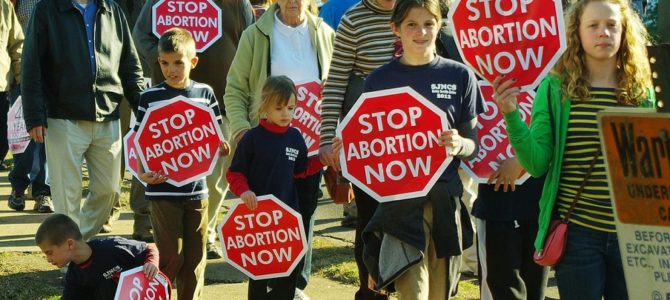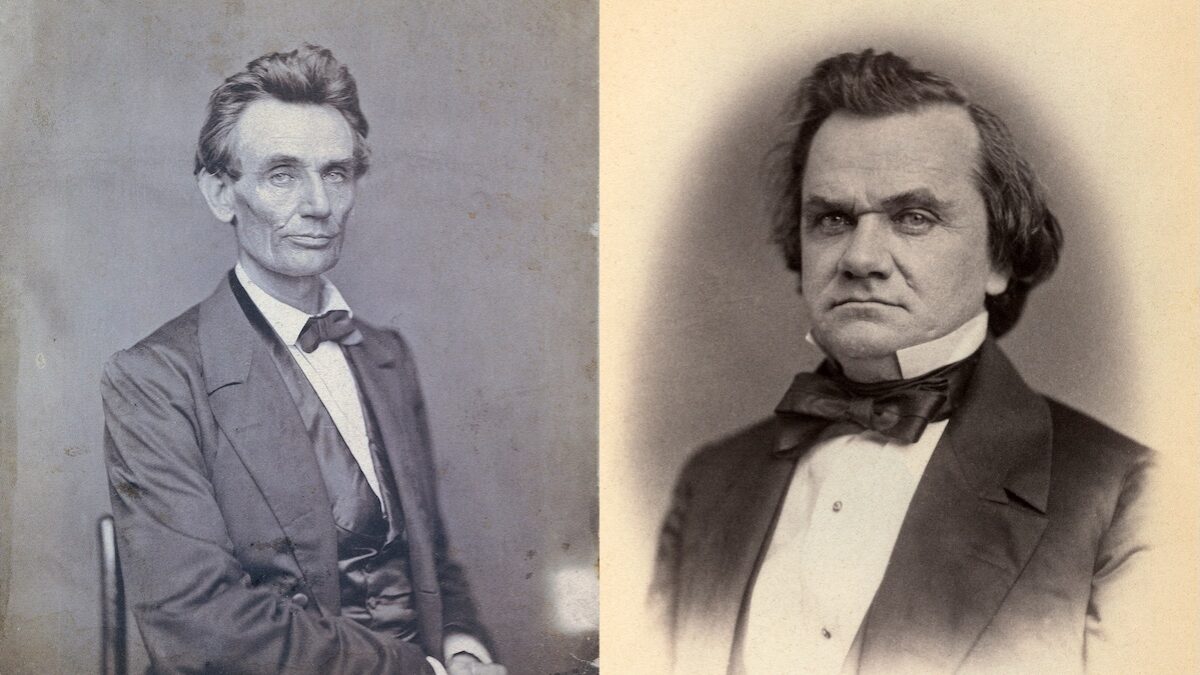
It has not been a good past few months for supporters of abortion rights in the United States.
A Democratic state delegate in Virginia calmly explained that her proposed legislation would allow for abortion up until the point of birth if a doctor confirmed that the pregnancy was affecting the mother’s mental health. A Democratic governor spoke with authority about how medical teams sometimes aim at the death of newborn infants. States like New York and Vermont passed some of the most abortion-permissive laws in the entire world.
All of this put a white-hot spotlight on late-term abortion (and even infanticide) in the United States.
Extremist Politicians
Even before these alienating events, rank and file Democrats were already opposed to the extremist views of their party’s leadership, which call for taxpayer-funded abortion on demand for any reason through all nine months of pregnancy. Twenty million Democrats identified as pro-life. Still more were broadly opposed to certain kinds of abortion—after 12 weeks and especially after 20 weeks. Especially significant for a party increasingly dominated by intersectional norms, economically vulnerable people of color were significantly more skeptical of abortion than were rich white people.
But in the last month, average Democrats put even more distance between themselves and their party’s leadership. Axios did significant reporting on a new Marist poll that showed a “dramatic shift” on abortion. Given that Marist has been asking the same abortion questions for more than a decade, and their numbers have remained relatively stable over time, such a shift is very significant.
In one month, remarkably, “pro-life” closed a 17-point gap with “pro-choice.” Both are now tied at 47 percent of the electorate.
Perhaps counterintuitively, Democrats led the shift. In February, 34 percent of Democrats identified as pro-life vs. 61 percent pro-choice. The January numbers were 20 percent pro-life and 75 percent pro-choice. Perhaps even more counterintuitively, Democrats under 45 moved the most: 47 percent now identify as pro-life and 48 percent as pro-choice. In January, those numbers were 28 and 65 percent. It’s an eyebrow-raising 19-point move in a pro-life direction.
I’ve written at length about how labels like “pro-life” and “pro-choice” often hide more than they reveal. Rather than revealing something specific about their views on abortion polices, such labels are a signal more about one’s (lack of) comfort with a particular political or ideological movement. Lots of folks who identify as pro-choice, for instance, agree with pro-lifers on actual policy proposals, but have such serious problems with the pro-life movement that they just cannot use such an identifier.
But it is in precisely this context that we can see how the shift reveals something important has happened. Proposals coming from pro-choice Democratic leadership over the past month have been so awful, so horrific, that large numbers of Democrats could no longer identify with the movement behind them. Americans absolutely loathe late-term abortion, with 87 percent (including large numbers of Democrats and others who identify as pro-choice) wanting it to be made illegal.
And this was before the overwhelming majority of Democratic senators voted against the Born-Alive Abortion Survivors Protection Act. Significantly, all six of the major Democratic candidates for president outed themselves as wild extremists by actually voting against a bill requiring that newborn children be treated with dignity, given proper life-saving measures if that is what they need to survive. This includes the so-called moderate in the group, Amy Klobuchar, who has taken zero anti-abortion votes in her entire career.
It goes without saying that none of these candidates are poised to take advantage of the dramatic pro-life shift among Democrats. On the contrary, their extremism is sure to alienate those who made the shift.
So what will millions and millions of pro-life Democrats do in 2020? Will they simply stay home? Maybe. Even probably. But what if they had a candidate to vote for in the Democratic primaries?
“Nonsense,” a skeptic might say. “No pro-life Democrat could ever get enough delegates to be viable candidate.”
An Opening For a Pro-Lifer?
Don’t be so sure. Nate Silver thinks there may be 17 or more Democratic candidates running for president. According to him, when there are this many people in the mix, things “get weird.” Republicans learned this lesson in the huge field vying for the 2016 nomination. The reason Trump was able to win, despite his fairly low level of support throughout, was because overall vote totals were so diluted by the number of candidates running.
This effect will be even more dramatic in the 2020 Democratic field. Close to 20 abortion-friendly candidates will be competing for handfuls of delegates, especially in the early states. Just one pro-life candidate could garner the votes of millions and millions of pro-life Democrats—including new converts who are super-disgusted and therefore super-motivated.
Furthermore, depending how you define the concept, about 20 states have open presidential primaries—including early states like New Hampshire and South Carolina, and other key states like Michigan, Wisconsin, Ohio, Virginia, North Carolina, and Texas. Think about how many millions of pro-life Republicans and Independents in these states would vote for the only pro-life candidate in the Democratic primary, especially given that Trump is likely to be without serious opposition in the GOP primary. Think about how many millions would vote for such a pro-life candidate in Texas alone.
“Nonsense,” our skeptic might say. “There aren’t viable pro-life Democratic candidates who could actually run. And even if there were, the party simply wouldn’t let them run.”
This is a more powerful objection from our skeptic, but it is not ultimately persuasive. Consider the debacle after the public learned the Democratic National Committee (DNC) tried to keep Bernie Sanders from winning the 2016 nomination. Under pressure, the party has restructured itself (due in no small part to reform of how superdelegates function) to not allow party leaders to put a heavy thumb on the scales. Thus, it is not nearly as closed a process as it used to be.
Three Good Picks
While there aren’t any home run candidates, there are at least three interesting people who could do well in this lane. John Bel Edwards, the current governor of Louisiana, takes backseat to no one in being anti-abortion (he’s also quite friendly to the Second Amendment). He also expanded Medicare and has accomplished major criminal justice reform in his state. A West Point grad who demolishes our lazy right-left political binary, Edwards would be a very interesting person to run in this lane.
Katrina Jackson, a state representative also from Louisiana, is a pro-life Democrat and an African-American woman. Invited to speak at this year’s March for Life, she is the author of a state law limiting abortion providers to physicians who have admitting privileges at a local hospital—a law that is likely to become the first major abortion test for the new Supreme Court. Especially given the intersectional values of the Democratic Party, it would be difficult to keep such a formidable candidate out this particular lane.
Then there is Sen. Bob Casey, Jr. of Pennsylvania. Despite some bad votes (from a left-leaning perspective), including voting against the confirmation of now-Supreme Court Justice Brett Kavanaugh, he is the most prominent pro-life Democrat in the United States—not least because of the pro-life legacy of his father, a legendary former governor of the state.
But he has also voted correctly on a number of contentious issues, including voting for both the Pain-Capable Act and Born-Alive Abortion Survivors Protection Act. He bucked party leadership both times and joined only handful of Democrats in so doing. Casey might be the best-positioned person to run, but he’d need to work overtime for the traditional pro-life movement to get behind him 100 percent.
Even if one of these candidates were to run and ultimately be unsuccessful in procuring the nomination, the energy and attention he or she would receive could create major national attention for the pro-life cause. It could be a total game-changer for the abortion debate—in the pro-life movement, in the Democratic Party, and in the United States of America.









